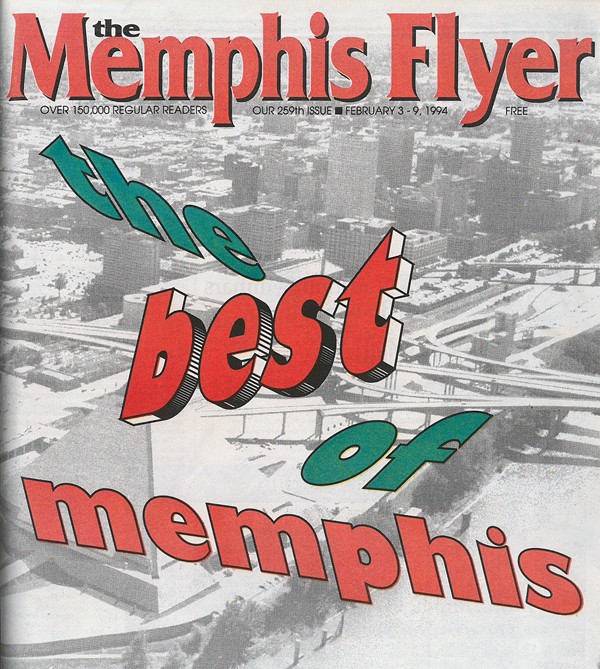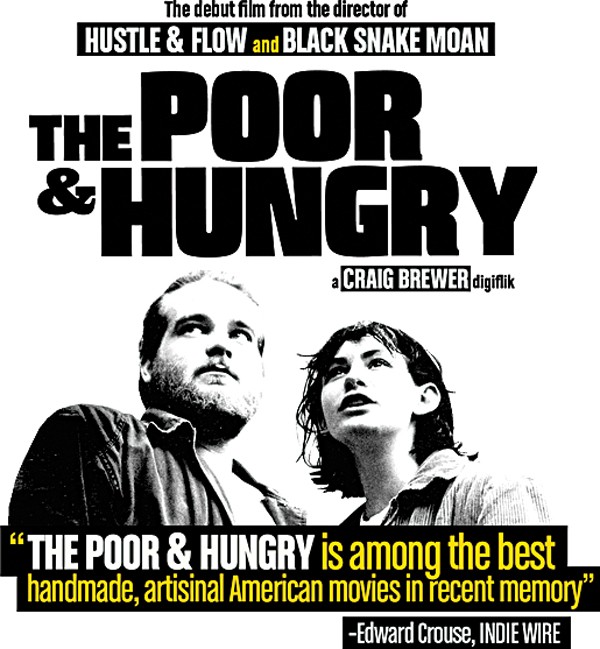In 1994, five years after the first issue of the Memphis Flyer hit news stands, we launched the first “Best of Memphis” poll. Back then, votes were cast on paper ballots, and each and every vote was counted and tallied by hand, which was a lot of work considering the first poll had 72 categories.
Some things haven’t changed since we started the poll; Huey’s, Rendezvous, Seikisui, Buster’s Liquors, and even WMC-TV news anchor Joe Birch have reigned supreme as the “gold medal winner” in their respective categories since day one.
To prep readers for the first poll, an editor’s note read: “We thought it would be fun to do a ‘Best of’ Issue. Our friends at Memphis magazine do one every year. Weekly newspapers from Los Angeles to the East Coast have been doing them for years. It couldn’t be that difficult, could it? We’d get about a hundred or so ballots back, count them, and put together a story.

We miscalculated a few things, not the least of which was the incredible volume of returned ballots. They came in boxes — hundreds per day. Tabulating the results took much longer than we had planned. And while we were very specific about our ‘one ballot per reader’ rule, we were still surprised at the number of businesses that tried to stuff our ballot box. Bars and restaurants were the main culprits. There was even a vain attempt made by a local deejay.”
The staff must have had their hands full with all of those ballots, but luckily the tradition, however tedious, carried on. The very first “Best of Memphis” Ballot also featured a Staff Picks section, complete with categories like: Memphian We’d Like to See Go Out In Drag (Mike Ramirez, George Klein, Bud Dudley), Most Overrated Memphian (Cybil Shepherd), People We’d Like To See Leave Town (“the pitchwoman for Hank’s 1/2-Price Furniture; the waving street corner anti-abortionist; the nut who put up those ‘Tobacco Kills’ signs all over the place; anybody who has ever spray-painted or has uttered the phrase ‘Meat Is Murder’), and even Worst TV Hairdo (Jerry Tate of Channel 3).
While some reader categories have remained a constant throughout the history of the “Best of Memphis,” others didn’t stand the test of time. In 1994, we had now-defunct categories for Best Fast Food (Wendy’s) and Best Place to Celebrate Divorce (Tiffany’s Cabaret). In 1996, we asked readers to rank the Best Place To Use Your Dog As a Chick/Dude Magnet (Overton Park) and Best Place to Cure a Hangover Without Alcohol (“my bed,” with CK’s Coffee Shop in a close second).
Twenty years later, the “Best of Memphis” poll is our biggest issue of the year. Local businesses proudly display their rankings, and readers argue over who should or shouldn’t have made the cut. It’s safe to say that the list has become an important part of local culture celebrating all the good things about life in Memphis. Except of course, Jerry Tate’s poor hairdo.



 Forestpath | Dreamstime.com
Forestpath | Dreamstime.com 
 Chris Shaw
Chris Shaw